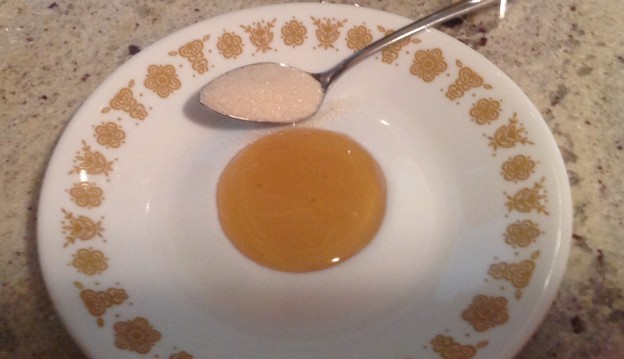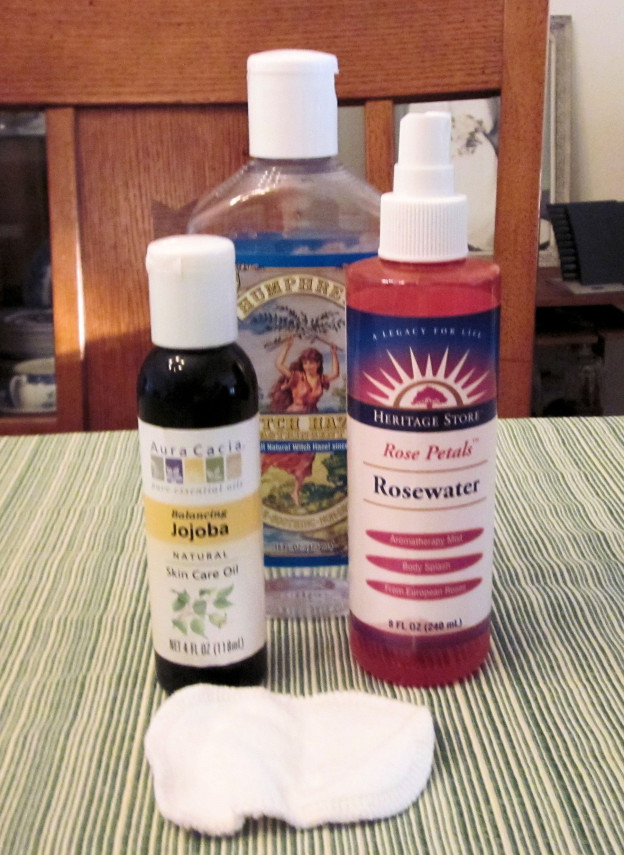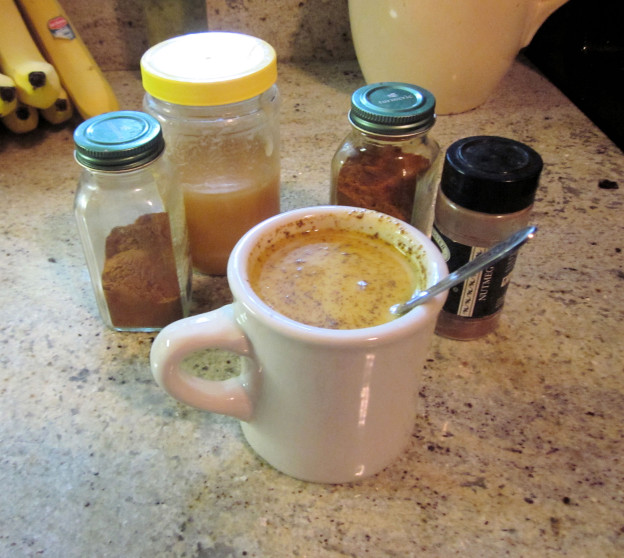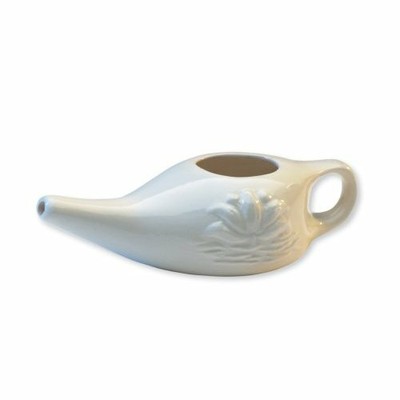I stopped coloring my hair sometime in the spring of 2012. I figured at a certain point in life, you just have to be good enough the way you are. And I figured if my hair is more brown than blonde these days, well, I’m still loveable.
When I moved in with my folks after Hurricane Sandy, Mom threatened for a while to highlight my hair while I was sleeping… “Come on, just a few to frame your face, Cindy.” She realized though that I was serious about going natural and eventually gave up.
My natural hair care has since gone even wilder than putting a halt on chemical color. I noticed that although my hair wasn’t breaking off as much when I stopped, it still seemed to break more than I felt it should. A little investigation revealed that harsh chemicals aren’t just in hair color and lighteners; they are in nearly every mass-market, commercial hair product we use. I’m not just talking about mousse, hairspray and gel; they are in your shampoo and conditioner too. Grab a bottle of anything you use on your hair (or face or body) and see how many of the ingredients you can pronounce.
In the interest of keeping your interest and this blog post a considerate length, I will not be explaining the perils of every ingredient. (You’re welcome!) One of the biggest culprits in shampoo and body washes is Sodium Laureth (Lauryl) Sulfate, a foaming agent. Ohhhh, I like a rich foamy lather! The problem is Sodium Lauryl Sulfate (SLS) is a known skin and eye irritant. It’s kind of funny that we would choose to slather our skin with something that irritates it. Are we all a bunch of masochists? The other big concern with SLS is the manufacturing process, know as ethoxylation, produces 1,4 dioxane contamination, a known carcinogen. Products with SLS contain traces of these 1,4 dioxanes.
It’s easy to dismiss it and say “weeeeelllll, if it is only trace amounts… is it really going to cause cancer?” Well, I don’t know but when you consider how often most people wash their hair and skin… you are putting this stuff all over your body every day! That’s a pretty significant environmental toxin if you ask me.
Sulfates are not just potentially poisonous; they also damage your hair and skin. Ironic, right? Harsh chemicals in all types of hair care products are dehydrating your hair and stripping off the natural oils that make your hair naturally soft and shiny. The more products you use, the more you damage your hair. Then the more you damage your hair, you use even MORE products to make it look shiny and healthy again. The crazy part is that if we didn’t use these products (or heated styling tools) our hair would be shiny and healthy! Even more ironic, right?!
Americans never used to wash or style their hair this much. I remember my Nana would get her hair washed and set once a week. That shellac-ed masterpiece looked about the same going into the salon, as it did coming out. I don’t want my hair to look like a helmet but it does show, you can go a week without shampooing and your hair won’t smell or look greasy.
You might think your hair is especially oily and needs to be shampooed every day. I did. However, the truth is that is how you trained your scalp. When you constantly strip your natural oils away, your scalp makes more oil to compensate. When you stop shampooing all the time, your scalp will slow down the oil production. At this point, I wash my hair twice a week: on Wednesdays, I shampoo and condition it (with a low hazard, organic shampoo and conditioner); over the weekend, I do a baking soda wash and apple cider vinegar rinse (acv). I have fine hair. So, if it looks a touch oily in between washes, I sprinkle a little arrow root powder on it to absorb the oil. I find this also creates volume at the roots. How nifty is that? No mousse or hairspray. All natural, you can even eat it.
A good rule of thumb in general… if you wouldn’t put it in your mouth, you probably want to at least limit how much you put on your skin.
So, tell me, how often do you shampoo?
Love and Blessings to all,
Cynthia
Resources:
Are you intrigued by washing your hair with baking soda and rinsing it with apple cider vinegar? Crunchy Betty has already laid it out brilliantly http://www.crunchybetty.com/no-poo-to-you-too
Would you like to know the hazard level on the products you use? Then you might want to check out the Environmental Working Group’s Skin Deep Database, http://www.ewg.org/skindeep/ There is an app you can download to your smartphone or apple mobile device to scan bar codes. So, you can be informed before you purchase.
Please follow me on Twitter. Also, please LIKE my Facebook Page.










